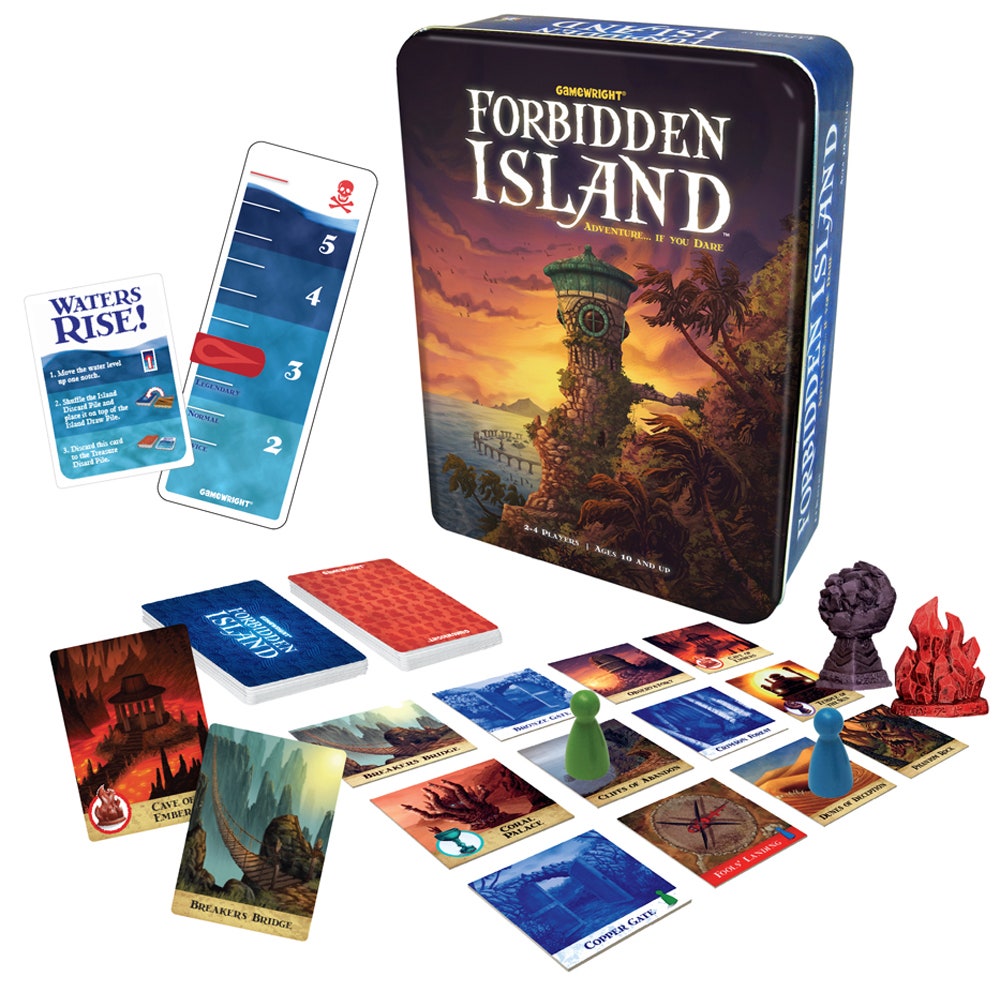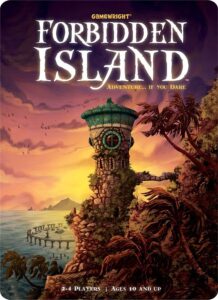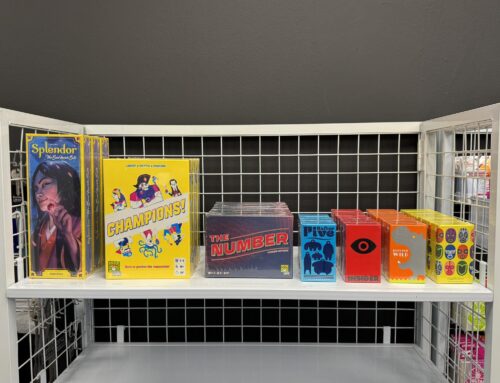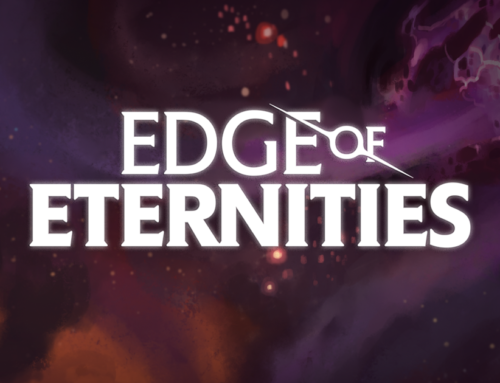Since the release of his modern classic Pandemic, Matt Leacock has developed something of a reputation as the guru of Cooperative board games. Forbidden Island is one of his stand-out release, a distillation of cooperative game mechanics into a simple single-box release that serves as an excellent introduction to the whole genre.
As a speedy 2 to 4 player experience, Forbidden Island is an excellent take on the hand-management and board control elements of many other cooperative games and is a must-have addition to any budding board game collection.
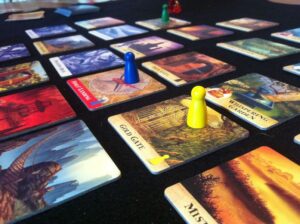 TLDR: Forbidden Island is a highly recommended first step into the realm of cooperative board games, featuring excellent components and easy to learn gameplay. Players must manage their resources as they explore a sinking island, working against the clock to retrieve all the island’s treasures before the entire board sinks and they collectively lose. As a cooperative game, this excellent all-win or all-lose mechanic makes it an great title for families and a great way for players to experience a casual less-competitive game session.
TLDR: Forbidden Island is a highly recommended first step into the realm of cooperative board games, featuring excellent components and easy to learn gameplay. Players must manage their resources as they explore a sinking island, working against the clock to retrieve all the island’s treasures before the entire board sinks and they collectively lose. As a cooperative game, this excellent all-win or all-lose mechanic makes it an great title for families and a great way for players to experience a casual less-competitive game session.
Part of the Cooperative-Game genus, Matt Leacock’s Forbidden Island is a lavishly produced product by Gamewright based around a fast playing easy-to-learn, easy-to-teach card-trading race-against-time mechanic. Part of this simple charm extends to the game playtime – a game of Forbidden Island, win or lose is over in half an hour.
Forbidden Island doesn’t come in a conventional box – it comes in a pretty metal tin, at once distinctive and eye-catching. Inside are stacks of lavishly illustrated cards depicting the exotic picked over crumbling ruins of an ancient civilization which immediately set the tone of the game. The inclusion of the treasure tokens, the Earth Stone, the Statue of the Wind, the Crystal of Fire and the Ocean’s Chalice, is likewise a nice touch. Where simple markers to reflect item recovery would have sufficed, instead Gamewright decided to include little molded plastic replica’s of each – pretty spiffy, especially since they don’t serve any purpose beyond indicating that a relic has been recovered. The rest of the components are pretty solid as well, little wooden explorer tokens, a slider marking water level and the rules.
Each of the players is an adventurer on the eponymous Forbidden Island, each with their own special ability to break a single game rule to their advantage. To win, the players must trade in hands of matching cards at specific sites, all return to the landing site and then discard a helicopter lift card to win. During a normal turn, each player takes 3 actions; move, trade cards, flip a flooded tile to a non-flooded state. After this, they draw two cards to their hand from the Treasure Deck. Hand limit is five cards which necessitates some degree of back and forth trading between players to obtain the right spread of cards. Then cards are drawn from the Flood Deck, randomly flooding a certain number of tiles based on the flood track.
/pic1001888.jpg)
There’s a steady sense of time ticking away, since hidden in the Treasure Deck are a number of Waters Rise! cards. Every time a Waters Rise! card is drawn during the draw, phase, the Flood Deck discard pile gets shuffled back on top of the discard. Though the players roughly have some idea of which tiles are going to flood next, the real tension lies in marshalling enough resources to deal with the flooding island in time – left alone, entire sections of the board will sink away completely, blocking routes, increasing the difficulty of moving around and generally making it far worse for the players.
Forbidden Island games are quick, tense affairs. By design, the players are continuously overwhelmed by more concerns than they have resources to deal with. As the island begins to sink, very often, players end up clinging to small slivers of land, nail-bitingly playing for time in the hope to get away by chopper. One of the joys of this game doesn’t involve moving the pieces at all. It’s all about puzzling through what will sometimes seem to be a hopeless situation.
If the players don’t work cooperatively and marshal their resources effectively, the game will outright win. Forbidden Island is a very playable 2-4 player co-op game that’s smaller and lighter than some of the other co-op games like Pandemic and Arkham Horror and it definitely plays faster. There may be players who will snub it for its simplicity, but Forbidden Island remains an excellent inclusion to a games library due to high production values and speedy game play. Players looking for a introduction into the world of non-competitive games should look no further.
Forbidden Island
Available now at Games @ PI and the Games @ PI Webstore

